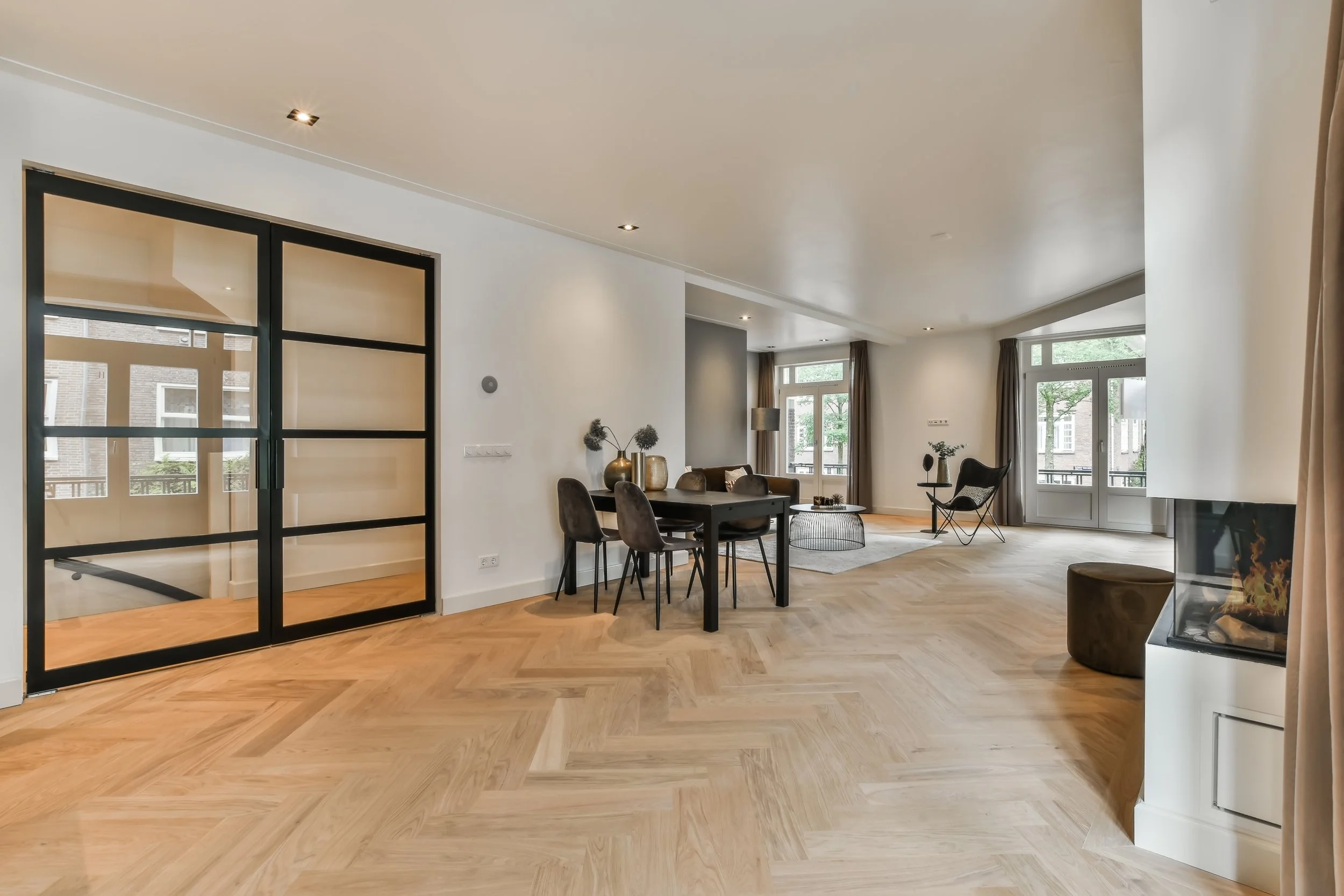
Residential flooring
Residential flooring installers in the UK
-
Residential flooring refers to the floor coverings used in homes or residential buildings, including options such as hardwood, laminate, carpet, tile, and vinyl. The type of flooring chosen depends on factors such as durability, cost, style, and personal preference.
-
There are several types of flooring options commonly used in residential homes, including:
1. Hardwood: Hardwood flooring is a classic and elegant option, often made from solid wood planks that are sanded and finished. Hardwood can last for many years with proper care and maintenance.
2. Laminate: Laminate flooring is a less expensive alternative to hardwood, made from layers of fiberboard and covered with a printed wood grain pattern. Laminate flooring is easy to install, durable and low-maintenance.
3. Carpet: Carpet is a soft, comfortable and warm flooring option that is available in a wide range of colors and textures. Carpets made from synthetic fibers are durable and stain-resistant.
4. Tile: Ceramic or porcelain tile flooring is a durable and moisture-resistant option for kitchens, bathrooms, and other high-traffic areas. Tiles come in a wide range of sizes, shapes, and colors.
5. Vinyl: Vinyl flooring is a popular and low-cost option that is easy to clean and maintain. It is available in sheets, tiles or planks, and can mimic the look of natural materials such as hardwood, stone, or tile.
The choice of flooring depends on personal preference, lifestyle, budget, and the room's function. For example, a tile floor is great for a kitchen or bathroom, while carpet is ideal for a bedroom.
-
With years of experience there’s no floor we can’t tackle but the most important part of a successful outcome is in the preparation. We can advise on how best to prepare the floor or do all the preparation work for you. Some of the stages to follow include:
1. Remove old flooring: If there is existing flooring in the room, it needs to be removed, including any nails, staples, or adhesive.
2. Clean the subfloor: The subfloor should be thoroughly cleaned and any debris removed to ensure a smooth surface for the new flooring.
3. Check the subfloor for levelness: The subfloor should be level and free of any gaps or holes. If necessary, use a self-leveling compound to make it level.
4. Repair subfloor: If the subfloor is damaged or has any structural issues, it should be repaired before installing the new flooring.
5. Prepare the perimeter of the room: Remove baseboards, door trim, and any other obstacles that may interfere with the flooring installation.
6. Acclimate the flooring: If the flooring material requires acclimation, it should be allowed to sit in the room for the recommended time period to adjust to the temperature and humidity levels.
7. Plan the layout: Before installing the flooring, consider the layout of the room and plan the placement of the first row of boards or tiles.
By preparing the room properly, you can ensure a smooth and successful flooring installation.
